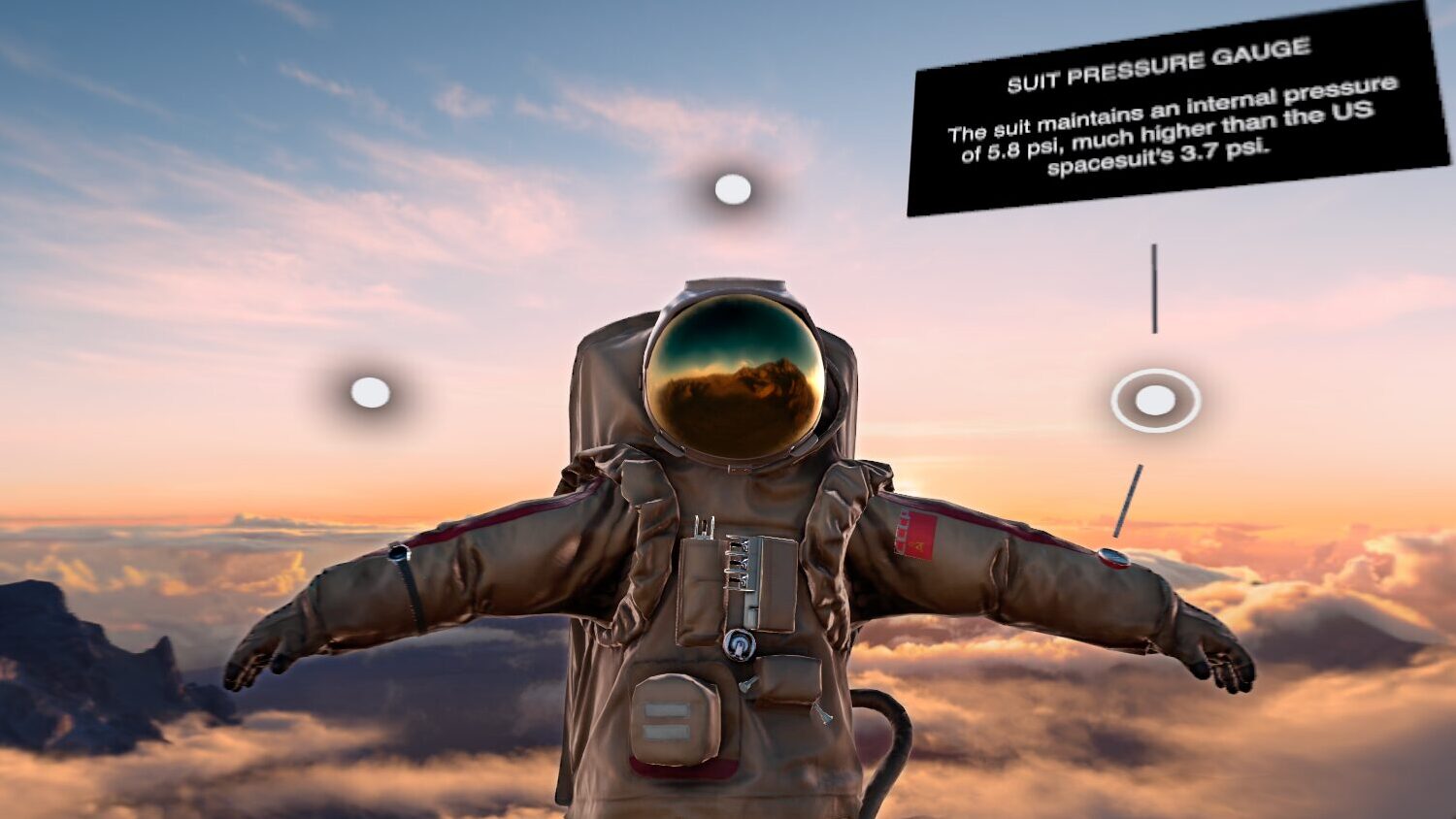
Apple has maintained a page of example USDZ format scenes for a while now. Before the launch of Vision Pro, these were interesting examples of Apple’s nifty technology, but easily forgotten. A good pal recently reminded me about this collection and I am so glad he did. Viewing these samples on the device is a completely different experience.
Some of the models have a shocking amount of detail. The collection from the Apple TV+ series, For All Mankind, is particularly rich and includes sounds and animations you can explore. It is hard to believe they are not real, physical objects you can just reach out and touch! There is also a collection of models captured with Apple’s Object Capture photogrammetry macOS and iOS APIs. This is a powerful tool that might prove useful for developers getting started in exploring spatial application development. The need for easily generated 3-D content is going to be a new hurdle for many developers coming from the old, flat world.
The support of USDZ files with Quick Look on the Vision Pro hardware is revelatory. It feels very natural to tap on a model on a web page or chat and then have it pop-up in its own movable, scalable, volumetric window, complete with environmental lighting and reflections. Getting a text from Brad with an attached USDZ and popping it into existence right next to me with a pinch was eye-opening. It was an instant delight to see a reflection of Haleakalā in the cosmonaut’s visor. With years of USDZ support creeping into Apple’s native apps, it is easy to see how this format might become an integral part of collaboration for folks working on digital and physical dimensional assets. Just a brief exposure to this workflow is a hint of what is to come.
If you haven’t tried some of these samples yet on a device, be sure to give it a go. The depth of USDZ support on Apple’s platforms reminds me of what it was like to be able to work with PDF natively all throughout Apple’s operating system, native apps, and APIs when Mac OS X first came to town.
